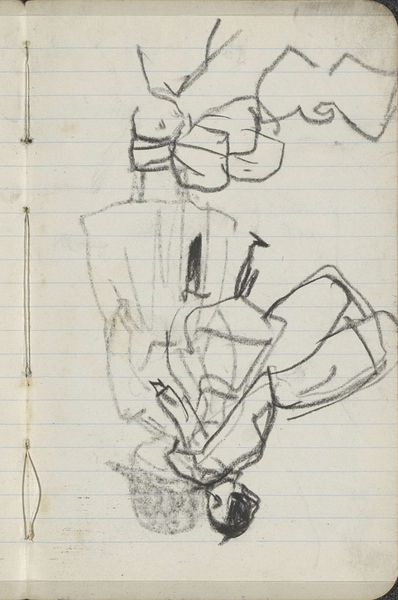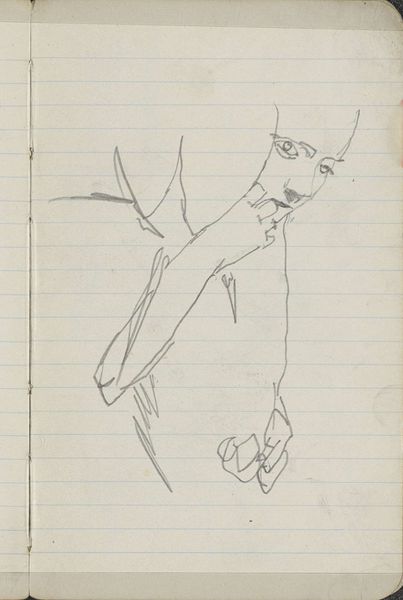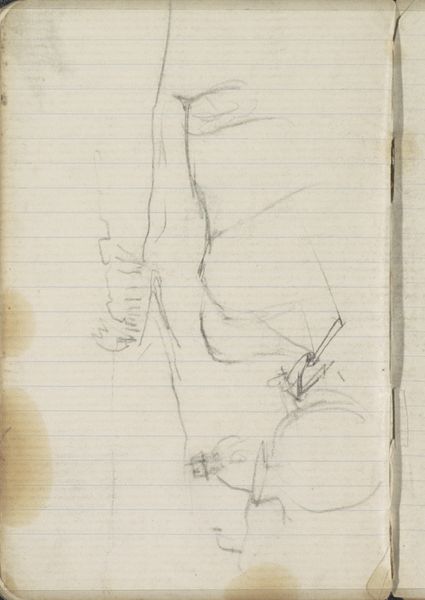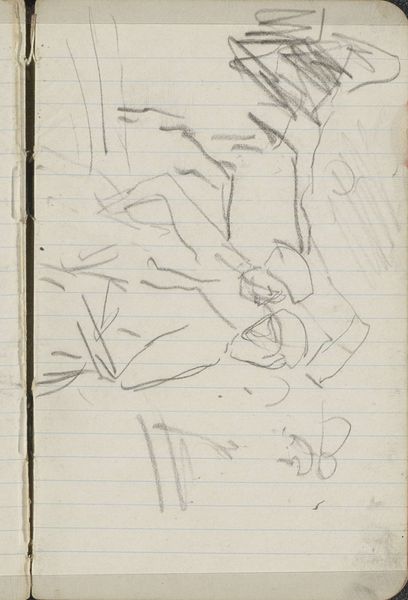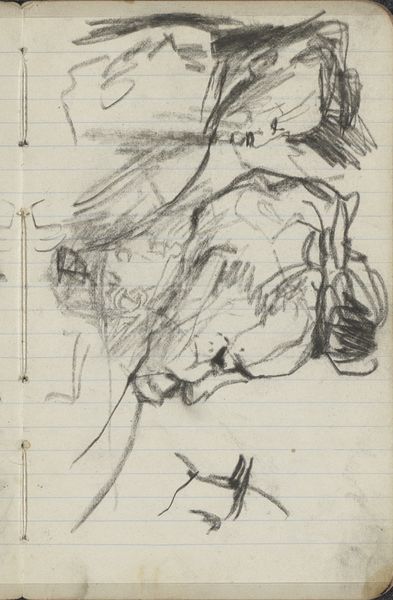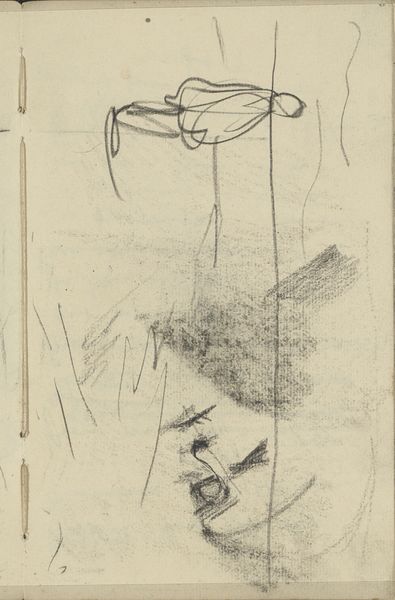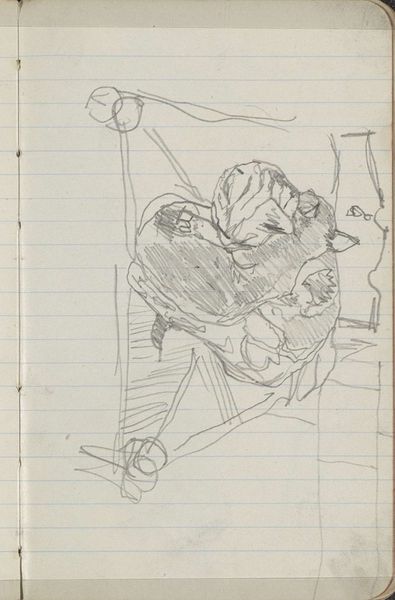
Copyright: Rijks Museum: Open Domain
Curator: Here we have George Hendrik Breitner’s drawing "Girl in a Kimono, reclining," created around 1893-1895. It is currently held in the collection of the Rijksmuseum. What are your first thoughts? Editor: Well, immediately, I'm struck by its apparent simplicity and how little labor went into producing such an image. It's just pencil on paper. A fleeting glimpse, maybe a preliminary study. Curator: The kimono in Breitner's work is particularly interesting, isn't it? During this period, Japonisme was fashionable in Europe, reflecting the fascination with Japanese culture and aesthetics, however the relationship was also steeped in colonial dynamics of appropriation and exoticization. Editor: Absolutely, and what a wonderful representation of it. I’m especially interested in this work from a material standpoint. What kind of paper did he use, and from where did he source the materials for the pencils he utilized in rendering this drawing? These aspects are relevant as well to our broader interpretation of the social impact of the piece. Curator: Good question. The material aspects definitely underscore the cultural exchanges happening then. The choice of such a mundane material like lined notebook paper really diminishes the idea of the sitter and shifts the context to sketchbooks and studios. What does this pose do to the artist-sitter dynamic, when the sketch is unfinished like this? Editor: Indeed. We see labor at its most direct form, in the most humble of mediums, paper, graphite. There is almost nothing that separates the artist and the materials. Also the recline removes it even further from the official space, we don’t even know who the artist or sitter even are. Curator: The use of line and the sketch-like quality give it a sense of intimacy. And it provides insight into Breitner's thought process, capturing a figure in repose. There's a real power dynamic at play—artist, model, the kimono, the West’s gaze. Editor: Yes, a dialogue between making, labor, the material and then those cultural values imposed onto it. I find this raw materiality deeply revealing. Curator: It leaves us contemplating the relationship between artistic representation and the cultural contexts that inform it. Editor: An unfinished beauty that prompts considerations of where it all came from, this being something more than just a pretty sketch.
Comments
rijksmuseum about 2 years ago
⋮
From sketch to photograph, and ultimately a painting, the genesis of the series of girls in kimonos can be clearly followed on the basis of Breitner’s study material. Looking closely you can see similarities, as well as the many adjustments Breitner made in the process of painting. He wrote: ‘I do indeed use photographs. I scribble in my sketchbook, but the choice, the composition is mine.’
Join the conversation
Join millions of artists and users on Artera today and experience the ultimate creative platform.
